Pale Indian Plantain (Cacalia atriplicifolia) is not something you are going to run across at your local garden center. It is a Midwestern native found in rocky woodlands, thickets and wet meadows throughout Illlinois, “conspicuous but uncommon” according to Swink and Wilhelm. I obtained a few from my friend Victor and scattered them about just to see what they would do, this being the only one to bloom this year.
What a lovely thing it has turned out to be, conspicuous to be sure, and not just in flower. Leaves and stems are thick and leathery. Leaves are blue-gray in color while the stems and petioles display a purple cast. Creamy white flowers exude an aroma like vanilla.
Forgive the blur — I haven’t quite mastered the macro feature of my camera.
A couple years back I rolled a hollow log into this bed that consists of nothing more than a jumble of Bittersweet clambering up an electric pole. There is an old gate and chair hiding in the jumble, along with Kitty.
Prairie Dropseed (Sporobolus heterolepsis) and Foxglove Beardtongue (Penstemon digitalis) are nearby companions. Alas, the snowplow almost demolished the old log last winter.
It appears that deadheading will extend the bloom. Right now I am content to watch the show.

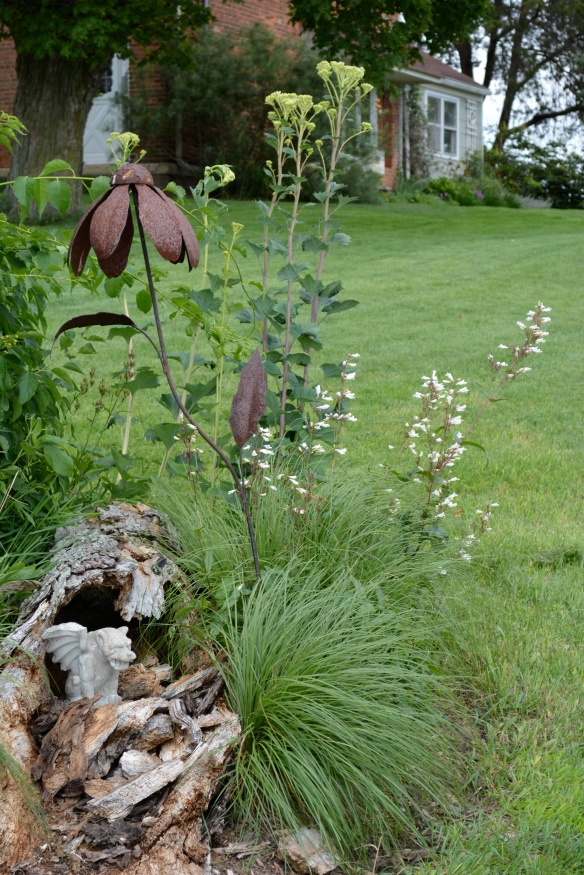
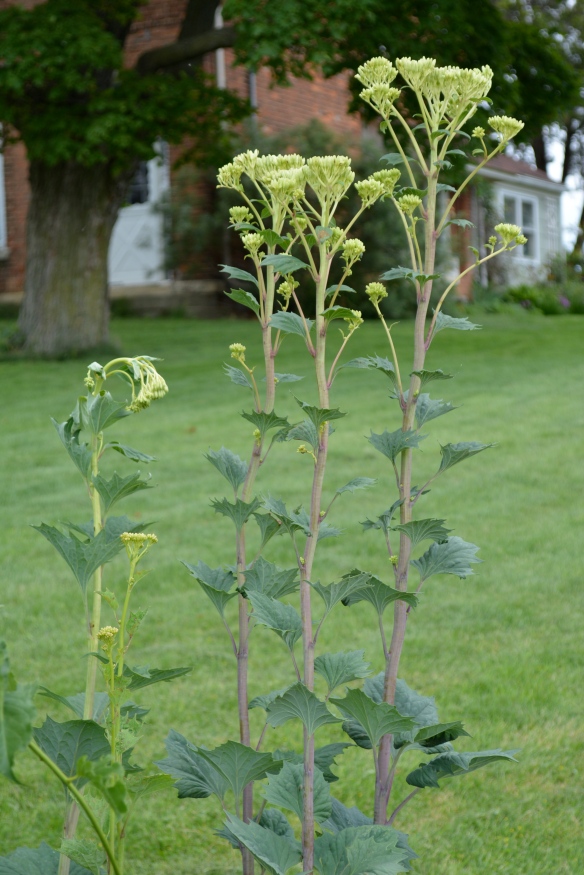
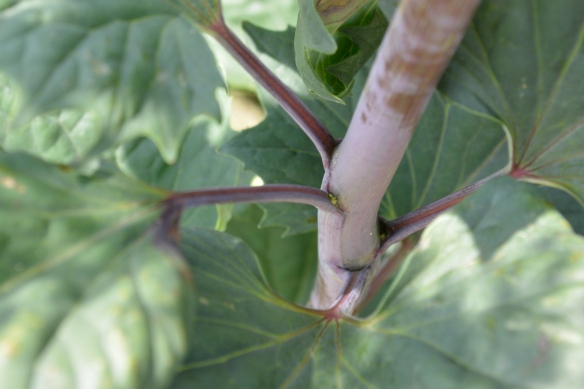
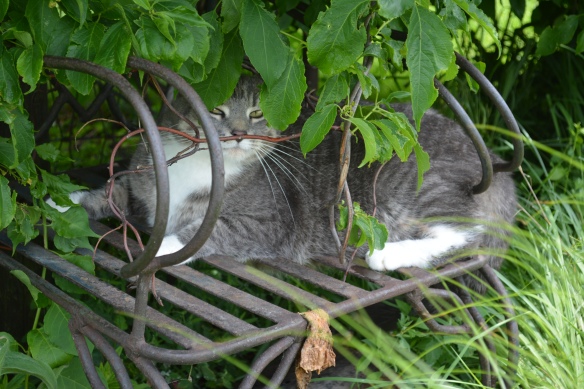
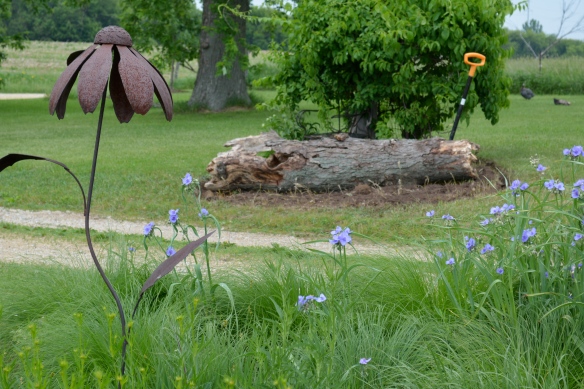
Oh, that’s lovely! Another new one for me…
LikeLiked by 1 person
Fabulous! Thanks for the tour! Wish I could smell it, though. I looked for the “scratch and sniff” option on my computer screen but couldn’t find it. LOL Katrina
LikeLiked by 1 person
I really like the Pale Indian Plantain – also a great name, is it the Indian or the Plantain that is pale? Anyway, an attractive plant, and I like the companions you’ve chosen for it. I should see if Prairie Moon has it.
LikeLike
Wish I could remember where I put them all, as I believe I had about 6-8 of them. I did find the foliage in one location quite low to the ground so I suspect that you need them to mature to get flowers or perhaps have a wet year. I don’t believe they are biennial.
It is fun to learn about natives — there are just so many of them!
LikeLiked by 1 person